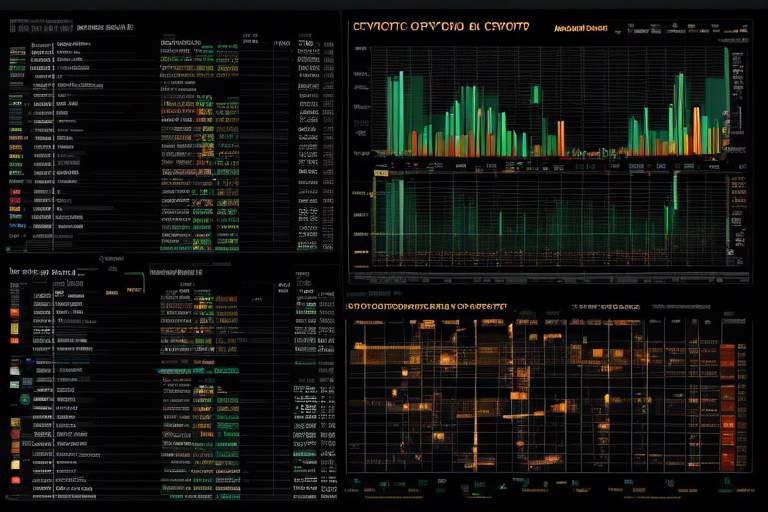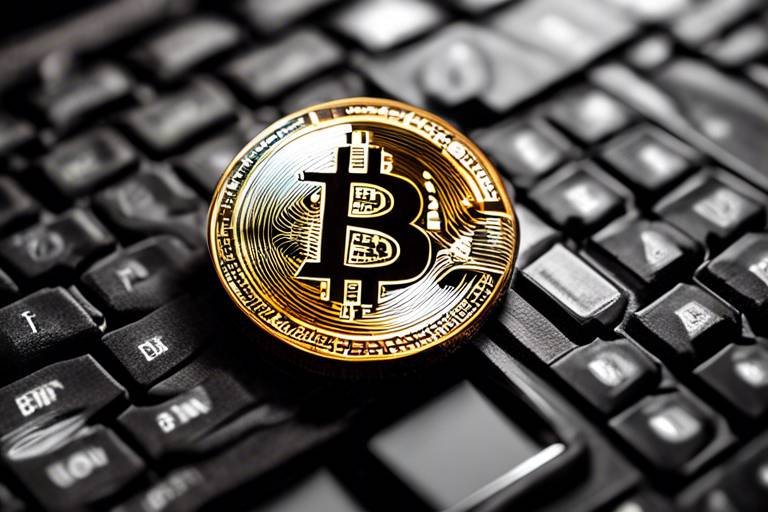Understanding the Impact of Halving Events on Bitcoin
Bitcoin halving events are more than just technical adjustments; they are pivotal moments that can send shockwaves through the entire cryptocurrency market. Every four years, the reward for mining new blocks is cut in half, creating a ripple effect that influences everything from miner profitability to investor sentiment. But why does this happen, and what does it mean for you as an investor or a miner? Let's dive into the mechanics of Bitcoin halving and uncover its significance in the ever-evolving landscape of cryptocurrency.
At its core, Bitcoin halving is a built-in mechanism designed to control the supply of Bitcoin over time. When Bitcoin was created in 2009, miners received 50 BTC for each block they mined. However, to ensure scarcity—much like precious metals—the reward is halved approximately every four years. This means that the current reward stands at 6.25 BTC per block, a figure that will drop to 3.125 BTC in the next halving event, expected in 2024. This reduction in supply is akin to a factory cutting production in half; it creates a sense of urgency and can lead to increased demand, driving prices up.
The significance of halving events cannot be overstated. They not only affect miners' incentives but also serve as a psychological trigger for investors. Historically, these events have been followed by substantial price increases, leading many to speculate about their impact on future market trends. Think of it like a roller coaster: the anticipation builds as you climb to the peak, and when you reach the top, the exhilarating drop can be both thrilling and terrifying. Investors often find themselves in a similar position, weighing the risks and rewards as they navigate the market landscape surrounding these events.
To further understand the implications of halving events, it's essential to look at historical data. Past halvings in 2012 and 2016 have shown that Bitcoin's price tends to surge in the months following the event. However, this is not merely a coincidence; it's a pattern shaped by supply and demand dynamics, market psychology, and the evolving landscape of cryptocurrency adoption. For instance, after the first halving in 2012, Bitcoin's price skyrocketed from around $12 to over $1,000 within a year. Such dramatic price movements create a buzz that attracts new investors, further fueling the cycle.
In summary, Bitcoin halving events are a critical component of the cryptocurrency ecosystem. They create a unique interplay between supply and demand, influencing everything from miner strategies to investor behavior. As we prepare for future halvings, understanding their impact will be crucial for anyone involved in the Bitcoin market. So, whether you're a seasoned investor or just dipping your toes into the crypto waters, keeping an eye on these events could make all the difference in your investment journey.
- What is Bitcoin halving? - Bitcoin halving is an event that occurs approximately every four years, cutting the mining reward for Bitcoin in half.
- Why does halving matter? - Halving affects the supply of Bitcoin, which can influence its price and market dynamics.
- How often does halving occur? - Halving occurs roughly every 210,000 blocks, which translates to about every four years.
- What happened after the last halving? - After the 2016 halving, Bitcoin's price saw significant increases, leading to a bullish market.
- Should I invest before a halving event? - While many investors see halvings as opportunities, it's important to do thorough research and consider market conditions.
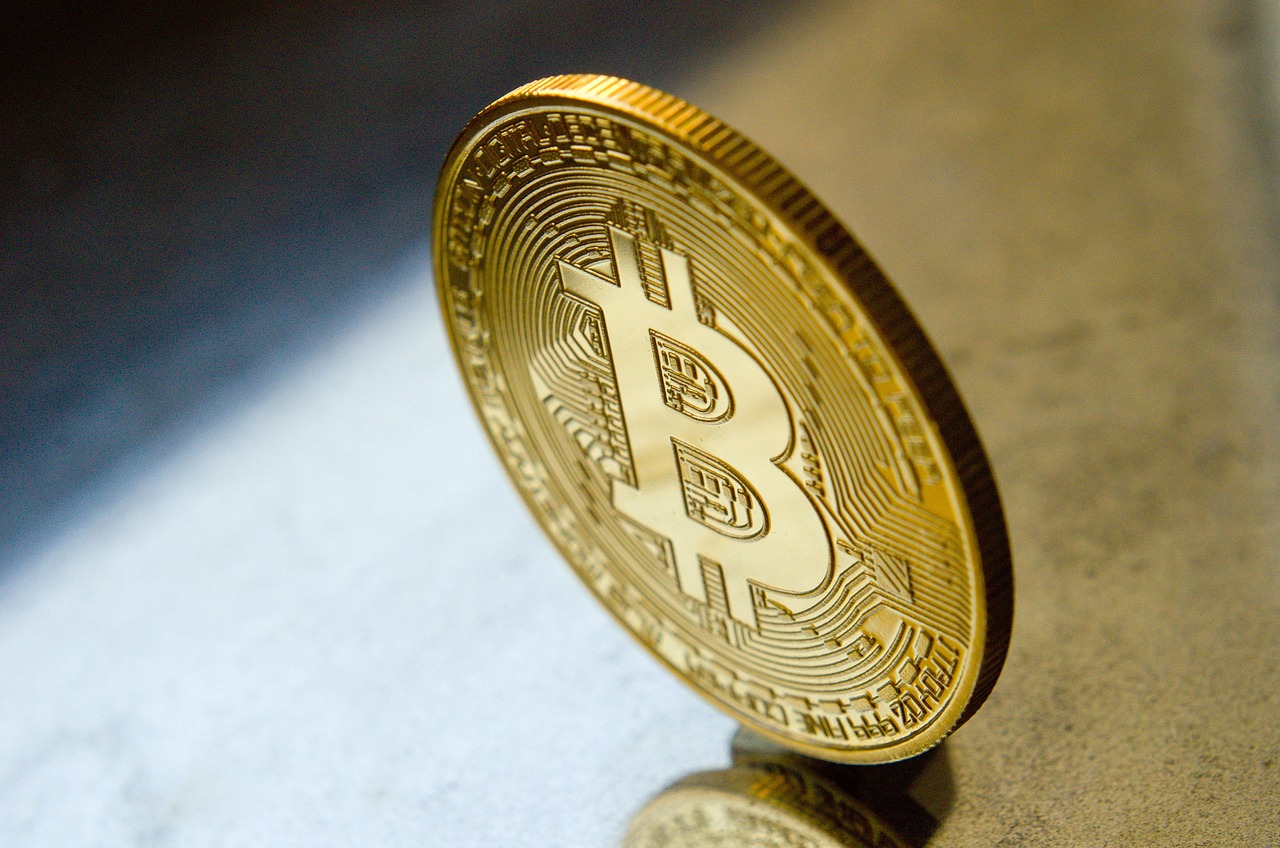
The Concept of Bitcoin Halving
Bitcoin halving is a critical milestone in the life of the Bitcoin network, occurring approximately every four years, or more specifically, after every 210,000 blocks are mined. This event is significant because it reduces the reward that miners receive for validating transactions and adding them to the blockchain by half. Initially, when Bitcoin was created in 2009, miners received 50 BTC for each block mined. However, after the first halving in 2012, this reward dropped to 25 BTC, and subsequent halvings have continued this trend, leading to the current reward of 6.25 BTC as of 2020.
But why does this halving occur? The answer lies in Bitcoin's design as a deflationary currency. Unlike traditional fiat currencies, which can be printed at will by governments, Bitcoin has a capped supply of 21 million coins. This means that as time progresses, the rate at which new Bitcoins are introduced into circulation decreases. Halving events are designed to ensure that Bitcoin becomes scarcer over time, which is a fundamental principle behind its value proposition.
The implications of halving are profound, not just for miners, but for the entire cryptocurrency ecosystem. When the mining reward is halved, miners must adjust their operations, which can lead to significant changes in the mining landscape. Some may find it less profitable to mine, especially if the price of Bitcoin does not rise in response to the halving. This can lead to a decrease in the number of active miners, which in turn affects the network's security and transaction speed.
Moreover, halving events often create a buzz in the market, attracting both seasoned investors and newcomers alike. The anticipation builds around these events, as many believe that a halving will lead to a price increase, similar to what has happened in previous instances. This cycle of expectation and speculation can contribute to increased volatility in Bitcoin's price leading up to and following a halving.
In summary, Bitcoin halving is not just a technical adjustment; it is a fundamental aspect of Bitcoin's economic model that impacts miners, investors, and the broader market. Understanding this concept is crucial for anyone looking to navigate the complexities of the cryptocurrency landscape.

Historical Halving Events
The history of Bitcoin halving events is not just a series of dates on a calendar; it's a narrative filled with excitement, uncertainty, and transformation. Each halving event has shaped the landscape of Bitcoin, influencing its price trajectory and altering the dynamics of the mining community. To fully appreciate the significance of these events, we need to look back at the past halvings and the profound effects they had on the cryptocurrency market.
Bitcoin halvings occur approximately every four years, specifically every 210,000 blocks mined. This mechanism is embedded in Bitcoin's code, ensuring that the total supply of Bitcoin will never exceed 21 million coins. The halving events reduce the reward for mining new blocks, which in turn affects the supply of Bitcoin entering the market. Historically, these events have been followed by substantial price movements, with investors keenly watching for the potential implications on their investments.
Let’s take a closer look at the two most significant halving events that have occurred so far: the first halving in 2012 and the second halving in 2016. Each of these events marked a turning point for Bitcoin, leading to dramatic shifts in market sentiment and miner behavior.
The first halving took place on November 28, 2012, when the block reward was reduced from 50 BTC to 25 BTC. This event was pivotal, as it marked Bitcoin's transition from a niche digital currency to a more mainstream asset. Following the halving, Bitcoin's price skyrocketed, reaching an all-time high of over $1,100 in late 2013. This surge was fueled by increased media attention, growing investor interest, and the realization that Bitcoin's supply was becoming increasingly scarce.
After the first halving, Bitcoin experienced a significant price increase, driven by a combination of factors. As the supply of new Bitcoins diminished, demand began to outpace supply, leading to a classic case of market dynamics at work. The influx of new investors, coupled with speculative trading, propelled prices to unprecedented levels. This price surge not only captured the attention of the financial world but also solidified Bitcoin's position as a legitimate asset class.
The 2012 halving also altered the mining landscape significantly. With the reward halved, many miners had to reassess their operations and profitability. Some smaller mining operations faced challenges and were forced to exit the market, while larger players who could leverage economies of scale thrived. This shift in miner participation had lasting implications for the network's security and decentralization, as a more concentrated mining power emerged.
The second halving occurred on July 9, 2016, reducing the block reward from 25 BTC to 12.5 BTC. This event brought new challenges and opportunities for Bitcoin. As the cryptocurrency matured, the market was more aware of the halving's implications. Traders and investors had learned from past experiences, and many began to position themselves in anticipation of price movements. The aftermath of this halving saw Bitcoin's price climb to nearly $20,000 by the end of 2017, showcasing the potent combination of reduced supply and increased demand.
In summary, the historical halving events of Bitcoin have not only shaped its price but have also influenced the strategies of miners and investors alike. As we look forward to future halvings, understanding these past events provides valuable insights into what might lie ahead.
- What is Bitcoin halving?
Bitcoin halving is an event that occurs every four years when the reward for mining new blocks is cut in half, effectively reducing the supply of new Bitcoins.
- How does halving affect Bitcoin's price?
Historically, Bitcoin's price has surged following halving events due to reduced supply and increased demand, but past performance is not always indicative of future results.
- When is the next Bitcoin halving?
The next Bitcoin halving is expected to occur in 2024, and many investors are eagerly anticipating its potential impact on the market.
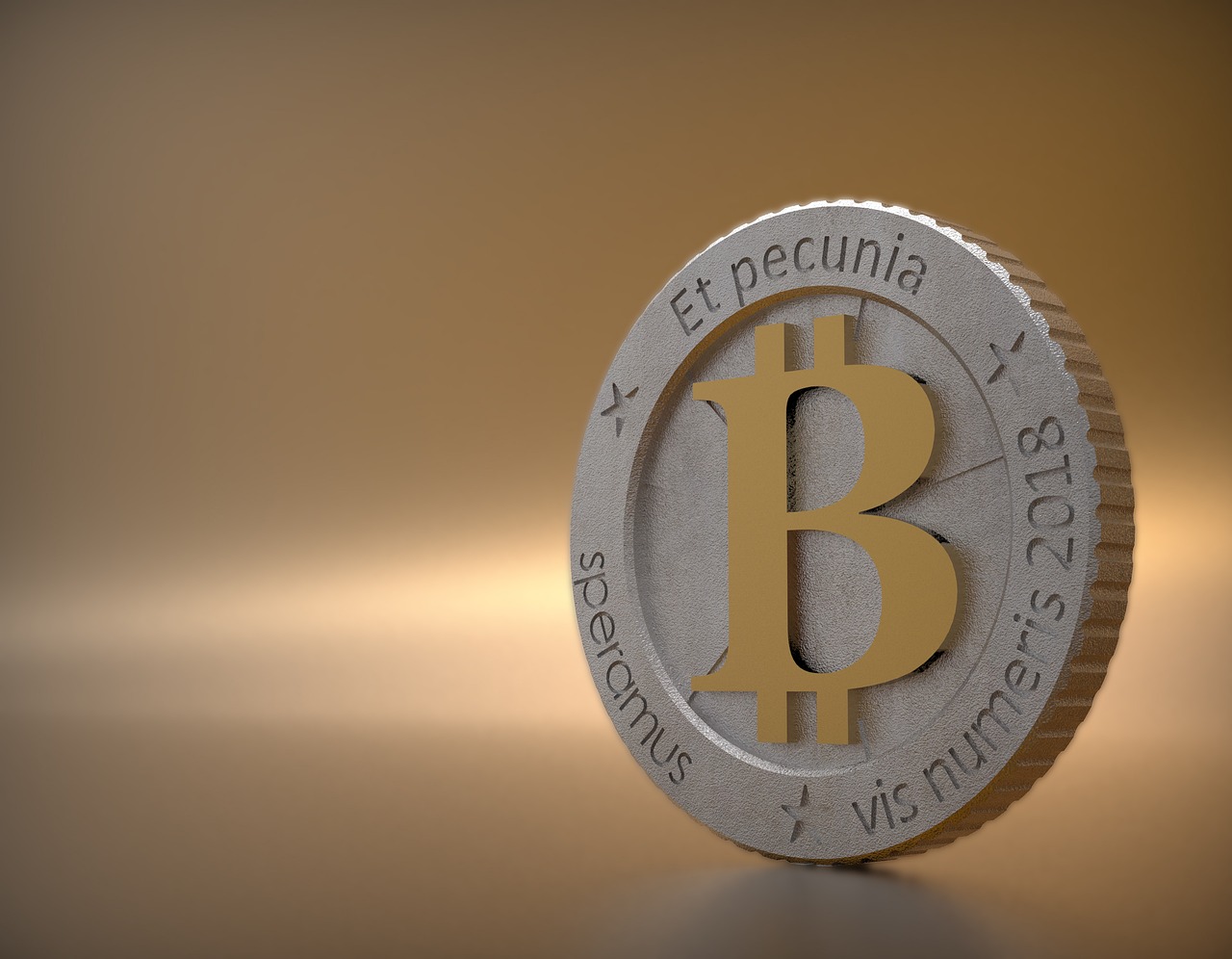
First Halving: 2012
The first Bitcoin halving event took place on November 28, 2012, and it was a landmark moment that forever changed the trajectory of the cryptocurrency. Before diving into the details, let’s clarify what halving means: it’s when the reward for mining new blocks is cut in half, reducing the rate at which new bitcoins are created. This particular halving reduced the block reward from 50 BTC to 25 BTC. It’s like a bakery that decides to cut the number of cookies it produces each day—fewer cookies mean more demand for the remaining ones, and that’s essentially what happened with Bitcoin.
In the lead-up to the halving, there was a palpable buzz in the community. Speculators and investors were closely watching the charts, anticipating the potential price movements that often follow such significant events. The halving didn’t just impact miners; it sent ripples through the entire market, creating a sense of urgency and excitement. To put it in perspective, imagine a roller coaster inching up to the peak—everyone is holding their breath, waiting for the exhilarating drop. That’s the kind of tension that surrounded Bitcoin leading up to the halving.
Following the halving, Bitcoin's price began to surge dramatically. In the months after November 2012, Bitcoin's price skyrocketed from around $12 to over $1,100 by late 2013. This meteoric rise can be attributed to several factors:
- Increased Scarcity: With fewer bitcoins being mined, the supply decreased, while demand continued to rise.
- Media Attention: The halving attracted significant media coverage, drawing in new investors eager to participate in the burgeoning cryptocurrency market.
- Market Sentiment: The optimism surrounding the halving event fostered a bullish sentiment among traders and investors.
Moreover, the first halving also had profound implications for miners. As the block reward was slashed, many miners faced a critical decision: continue mining at a reduced reward or shut down their operations altogether. This shift in the mining landscape led to a consolidation of mining power, where only the most efficient and well-equipped miners could thrive. This not only affected profitability but also the overall security of the Bitcoin network. Think of it like a sports team: when the star players leave, the team has to adapt, and that can lead to both challenges and opportunities.
In summary, the first halving in 2012 was more than just a technical adjustment; it was a pivotal event that reshaped the Bitcoin ecosystem. It catalyzed a massive price increase, influenced mining dynamics, and set the stage for future halvings. The excitement and volatility that followed created a narrative that continues to draw both seasoned investors and newcomers into the world of Bitcoin.
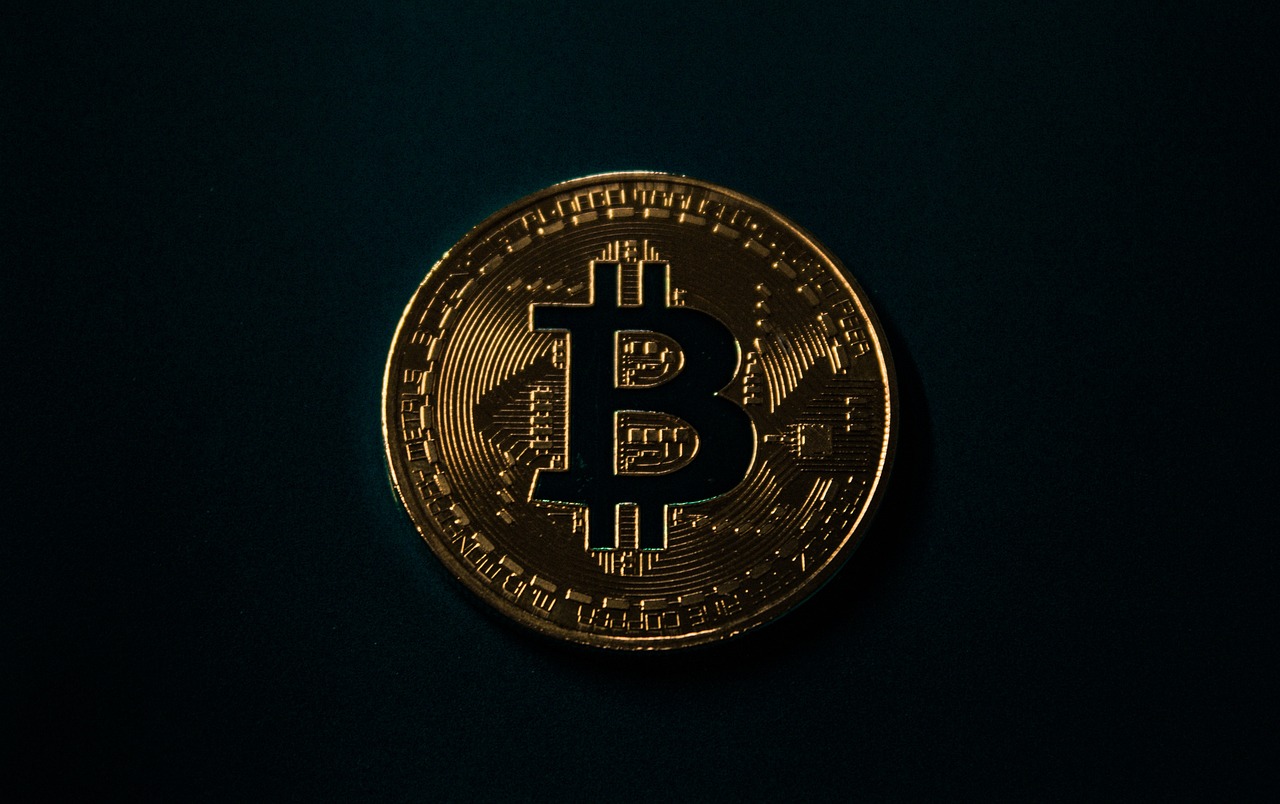
Price Surge Post-Halving
The aftermath of a Bitcoin halving is often characterized by a notable price surge, a phenomenon that has intrigued investors and analysts alike. Following the first halving in November 2012, Bitcoin's price skyrocketed from around $12 to over $1,100 within a year. This dramatic increase wasn't just a fluke; it was a result of several interrelated factors that created a perfect storm for Bitcoin's valuation. So, what exactly drives this surge?
Firstly, the reduction in supply plays a crucial role. When the halving occurs, the reward for mining new blocks is cut in half, effectively reducing the rate at which new Bitcoins are generated. With fewer coins entering circulation, the supply becomes scarcer, which can lead to increased demand. As more investors catch wind of this scarcity, they rush to buy Bitcoin, driving prices up. Think of it like a limited edition sneaker release—once people realize there are fewer pairs available, the value skyrockets!
Secondly, the increased media attention surrounding halving events can't be overlooked. As the date approaches, news outlets and social media platforms buzz with discussions about what the halving means for Bitcoin's future. This heightened visibility often attracts new investors who may have previously been unaware of Bitcoin or skeptical about its potential. The influx of new capital can create a self-reinforcing cycle where rising prices attract even more interest, further pushing the price higher.
Moreover, the psychology of investors plays a significant role in these post-halving price movements. Many traders believe that Bitcoin's historical price patterns will repeat themselves; thus, they buy in anticipation of future gains. This behavior can lead to a herd mentality, where rising prices encourage more buying, creating a feedback loop that drives prices even higher. This phenomenon is not unique to Bitcoin; it can be observed in various financial markets, particularly when speculation is involved.
It's also essential to consider the long-term implications of these price surges. While the initial post-halving increases are often dramatic, the sustainability of such gains can vary. For instance, after the 2012 halving, Bitcoin did experience a significant correction after reaching its peak. However, it eventually established a new price floor, which was much higher than before the halving. This pattern was repeated after the 2016 halving, where Bitcoin saw rapid price increases followed by corrections, but ultimately, it continued to rise in value over the long term.
To illustrate the price movements following halving events, here's a brief overview:
| Halving Event | Price Before Halving | Price One Year Later |
|---|---|---|
| First Halving (2012) | $12 | $1,100 |
| Second Halving (2016) | $657 | $2,500 |
In conclusion, the post-halving price surge is not merely a coincidence but rather a complex interplay of reduced supply, increased media attention, and investor psychology. As we await future halving events, understanding these dynamics can help investors navigate the often turbulent waters of the cryptocurrency market. So, are you ready to ride the wave of the next halving? The potential for profit could be just around the corner!
- What is Bitcoin halving? Bitcoin halving is an event that occurs approximately every four years, reducing the reward for mining new Bitcoin blocks by half.
- How does halving affect Bitcoin's price? Halving typically leads to reduced supply, which can increase demand and drive prices higher.
- When is the next Bitcoin halving? The next halving is expected to occur in 2024, though the exact date can vary based on block generation times.
- Should I invest in Bitcoin before the halving? While many investors see potential, it's essential to conduct thorough research and consider market conditions before investing.

Mining Dynamics Shift
The 2012 Bitcoin halving was not just a moment of price excitement; it fundamentally reshaped the landscape of Bitcoin mining. As the reward for mining a block dropped from 50 BTC to 25 BTC, miners had to quickly adapt to the new economic reality. This shift was akin to a sudden change in the rules of a game—those who couldn't adjust were left behind, while others found new strategies to thrive.
One of the most significant changes was the profitability equation for miners. Many miners, especially those using older hardware, found their operations less viable. As the reward halved, the cost of electricity and equipment became more pronounced, leading to a wave of miners exiting the market. This exodus resulted in a temporary decrease in hash rate, which is the total computational power used to mine and process transactions on the network. A lower hash rate can lead to longer block times and increased transaction fees, creating a ripple effect throughout the ecosystem.
However, this wasn't the end of the story. The halving event also sparked innovation. Miners began investing in more efficient hardware, like ASICs (Application-Specific Integrated Circuits), which dramatically improved their chances of staying profitable. As these new technologies emerged, they not only enhanced mining efficiency but also contributed to the overall security and integrity of the Bitcoin network.
Interestingly, the halving also led to a geographical shift in mining operations. Miners started to seek out regions with cheaper electricity costs, often relocating to areas where renewable energy sources were abundant. This trend not only helped reduce operational costs but also aligned with the growing global emphasis on sustainability. In many ways, the halving acted as a catalyst for the evolution of mining practices, pushing miners to become more resourceful and environmentally conscious.
To summarize the impact of the 2012 halving on mining dynamics, here’s a quick overview:
| Aspect | Before Halving | After Halving |
|---|---|---|
| Block Reward | 50 BTC | 25 BTC |
| Mining Profitability | Higher for many | Lower for some, leading to exits |
| Hash Rate | Stable | Temporary decrease |
| Hardware Investment | Older models | More efficient ASICs |
| Geographical Shift | Varied locations | Focus on low-cost energy areas |
In conclusion, the 2012 halving event was a pivotal moment that not only influenced Bitcoin's price but also led to a significant shift in the mining dynamics. Miners had to adapt, innovate, and find ways to remain profitable in a rapidly changing environment. This adaptability is a testament to the resilience of the Bitcoin ecosystem as a whole.
- What is Bitcoin halving? Bitcoin halving is an event that occurs approximately every four years, reducing the reward for mining new blocks by half, affecting the overall supply of Bitcoin.
- How does halving affect Bitcoin's price? Historically, Bitcoin's price tends to rise after halving events due to reduced supply and increased demand, although past performance is not indicative of future results.
- What happens to miners after a halving? Miners may face reduced profitability, leading to potential exits from the market, but many adapt by investing in more efficient technology.
- Can halving events lead to increased transaction fees? Yes, if the hash rate decreases significantly, it can lead to longer block times, which may result in higher transaction fees.

Second Halving: 2016
The second Bitcoin halving occurred on July 9, 2016, and it was a significant milestone in the cryptocurrency's journey. This event reduced the mining reward from 25 BTC to 12.5 BTC per block, creating a ripple effect throughout the entire Bitcoin ecosystem. Just like the first halving, this event sparked curiosity and speculation among investors, miners, and crypto enthusiasts alike. The anticipation surrounding this halving was palpable, as many were eager to see how it would influence Bitcoin's price and market dynamics.
In the lead-up to the halving, Bitcoin's price exhibited a notable upward trend, climbing from around $450 to nearly $700. This surge was fueled by a mix of speculation and the basic economic principle of supply and demand. With the reward for mining being cut in half, many investors believed that this would lead to a decrease in the supply of new Bitcoins entering the market, thereby driving up prices. It was almost as if the cryptocurrency was preparing for a grand performance, with the halving acting as the dramatic crescendo in its story.
After the halving, Bitcoin's price initially experienced some volatility, but it soon began to stabilize and rise significantly. By the end of 2016, Bitcoin had reached over $1,000, marking a pivotal point in its history. This price surge was not just a fluke; it was a reflection of several factors:
- Increased Media Attention: The halving attracted substantial media coverage, drawing new investors into the space.
- Growing Adoption: More merchants began accepting Bitcoin, enhancing its utility and appeal.
- Institutional Interest: As Bitcoin gained traction, institutional investors started to take notice, leading to increased confidence in the cryptocurrency.
Furthermore, the 2016 halving had a profound impact on the mining landscape. As the block reward decreased, many smaller miners found it challenging to maintain profitability, leading to a consolidation in the mining industry. Larger mining operations with better technology and access to cheaper electricity began to dominate the network. This shift not only affected the competition among miners but also raised concerns about centralization within the Bitcoin network. It was a classic case of survival of the fittest, where only those who could adapt to the new economic environment would thrive.
In conclusion, the second halving in 2016 was more than just a technical adjustment; it was a transformative event that reshaped the Bitcoin market and mining ecosystem. The price surges, shifts in mining dynamics, and increased interest from various stakeholders set the stage for the future of Bitcoin, making it a fascinating chapter in the ongoing saga of this revolutionary digital currency.
1. What is Bitcoin halving?
Bitcoin halving is an event that occurs approximately every four years, where the reward for mining new blocks is cut in half, reducing the rate at which new Bitcoins are generated.
2. Why does halving affect Bitcoin's price?
Halving impacts Bitcoin's supply, and according to the principles of supply and demand, a decrease in supply can lead to an increase in price, especially if demand remains steady or increases.
3. How often does Bitcoin halving occur?
Bitcoin halving occurs roughly every four years or after every 210,000 blocks have been mined.
4. What happened after the 2016 halving?
After the 2016 halving, Bitcoin's price saw significant growth, surpassing $1,000 by the end of that year, and the mining landscape shifted as larger operations began to dominate.

Market Reactions to Halving
The cryptocurrency market is a wild beast, constantly shifting and evolving, and nowhere is this more apparent than during Bitcoin halving events. These moments create a ripple effect that can send shockwaves through the market, altering investor sentiment and trading strategies. But why does this happen? Well, when the reward for mining Bitcoin is cut in half, it directly impacts the supply of new coins entering the market. This scarcity can lead to increased demand, and as we all know, when demand goes up while supply is constrained, prices tend to rise. It’s a classic case of supply and demand dynamics playing out in real-time.
Historically, traders and investors have reacted to halving events with a mix of excitement and caution. On one hand, there’s the thrill of potential profits as prices soar. On the other hand, there’s the fear of volatility and the uncertainty of how the market will respond. This duality creates a fascinating atmosphere around halving events, where emotions run high and decisions are often made in the heat of the moment. For many, it’s a time to strategize, whether that means buying in anticipation of a price surge or selling to lock in profits before the market takes a downturn.
During these periods, social media and news outlets buzz with discussions about Bitcoin’s future. Traders often flock to platforms like Twitter and Reddit, sharing predictions and insights. The excitement can be palpable, and it’s not uncommon to see hashtags related to Bitcoin halving trending as investors seek to capitalize on the hype. This collective sentiment can create a feedback loop where positive news leads to more buying, which in turn drives prices higher, creating a self-fulfilling prophecy.
However, it’s essential to recognize that not all market reactions are positive. Some investors may panic sell if they perceive the market is heading south, leading to increased volatility. This is particularly true for new investors who may not fully understand the cyclical nature of Bitcoin’s price movements. As a result, the market can experience sharp fluctuations in the short term, with prices swinging wildly as traders react to news and sentiment.
To better understand how market reactions can vary, let’s take a look at the historical price movements around halving events:
| Halving Event | Date | Price Before Halving | Price 1 Month After | Price 6 Months After |
|---|---|---|---|---|
| First Halving | November 2012 | $12 | $1,000 | $650 |
| Second Halving | July 2016 | $650 | $2,500 | $2,900 |
| Third Halving | May 2020 | $8,500 | $10,000 | $18,000 |
This table illustrates the dramatic changes in Bitcoin’s price following each halving event. As you can see, the price often experiences a significant increase in the months following the halving. However, it’s crucial to note that past performance is not indicative of future results, and each halving event can yield different outcomes based on the broader economic landscape and market conditions.
In conclusion, market reactions to Bitcoin halving events are complex and multifaceted. While many investors view these moments as opportunities for profit, they also come with risks and uncertainties. Understanding the psychology behind these reactions can help investors navigate the choppy waters of the cryptocurrency market, allowing them to make informed decisions. So, whether you're a seasoned trader or a curious newcomer, keeping an eye on these events can provide valuable insights into Bitcoin's ever-changing landscape.
- What is Bitcoin halving? Bitcoin halving is an event that occurs approximately every four years, reducing the reward for mining new blocks by half.
- How does halving affect Bitcoin's price? Halving events often lead to increased scarcity of Bitcoin, which can drive up demand and, consequently, the price.
- What should investors do during a halving event? Investors often strategize by either buying in anticipation of price increases or selling to lock in profits, depending on their market outlook.
- Are there risks associated with investing during halving events? Yes, the market can be volatile during halving events, and prices can swing dramatically based on investor sentiment and market dynamics.

Investor Strategies
When it comes to Bitcoin halving events, investors often find themselves at a crossroads, weighing their options and strategizing for the future. The key to navigating this volatile landscape lies in understanding the market dynamics that accompany these events. One popular strategy among investors is to accumulate Bitcoin before the halving occurs. This approach is based on historical trends that suggest prices tend to rise after a halving event, as the supply of new Bitcoin entering the market is reduced.
Another strategy is to adopt a sell-the-news approach. Many traders believe that prices may spike leading up to the halving, only to experience a correction shortly after. By selling some of their holdings before the event, they aim to capitalize on the price increase while minimizing potential losses. This tactic requires a keen understanding of market sentiment and timing, as it can be risky if prices continue to rise.
Additionally, some investors opt for a long-term holding strategy, often referred to as "HODLing." This philosophy is rooted in the belief that Bitcoin's value will increase over time, regardless of short-term fluctuations. For these investors, the halving serves as a reminder of Bitcoin's scarcity and potential for appreciation. They view it as an opportunity to reinforce their commitment to the asset, holding through the noise of market volatility.
Furthermore, it's essential to consider the impact of external factors on investor strategies. For instance, regulatory changes, technological advancements, and macroeconomic trends can significantly influence market behavior. Investors should remain vigilant and adapt their strategies accordingly. Keeping an eye on news and developments related to Bitcoin and the broader cryptocurrency market can provide valuable insights that inform decision-making.
In summary, investors have various strategies at their disposal when navigating the complexities of Bitcoin halving events. Whether they choose to accumulate, sell, or hold, the critical factor is to remain informed and flexible. As the market continues to evolve, so too should their approaches, allowing them to capitalize on the unique opportunities that each halving presents.
- What is Bitcoin halving? Bitcoin halving is an event that occurs approximately every four years, where the reward for mining new blocks is cut in half, reducing the rate at which new Bitcoins are created.
- How does halving affect Bitcoin's price? Historically, Bitcoin's price tends to increase after halving events due to reduced supply and increased demand, though immediate reactions can vary.
- What strategies should I consider during a halving? Common strategies include accumulating Bitcoin before the halving, selling some holdings to take profits, or adopting a long-term holding approach.
- Are there risks associated with halving events? Yes, while halvings can lead to price increases, they can also result in short-term volatility and corrections, so investors should be prepared for potential market swings.
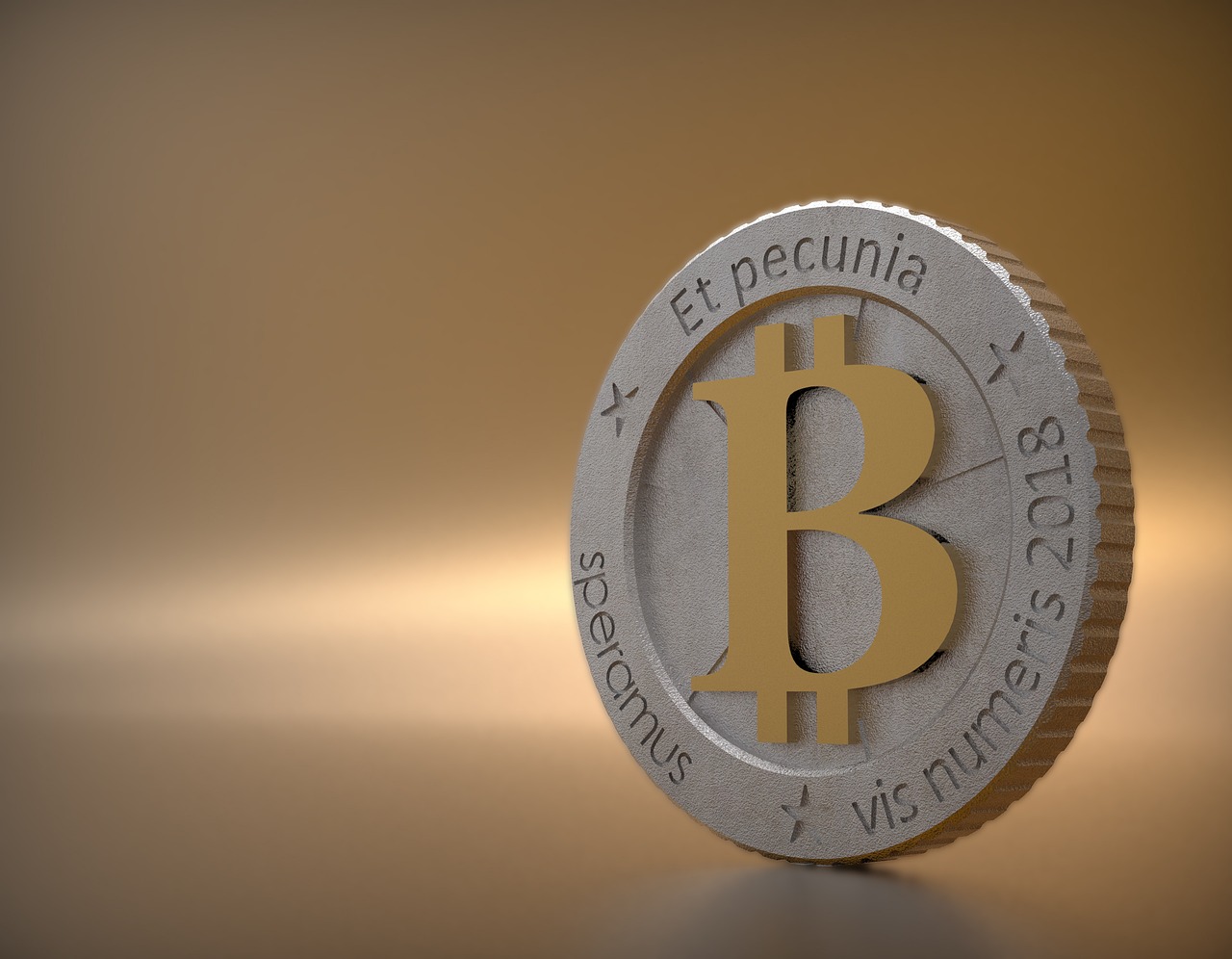
Short-Term vs. Long-Term Effects
When it comes to Bitcoin halving events, the impact on price can be likened to a rollercoaster ride—thrilling, unpredictable, and full of twists and turns. In the short term, halving events often trigger a wave of excitement among traders, leading to significant price volatility. This is primarily driven by speculation and the fear of missing out (FOMO). Investors rush to buy in anticipation of future price increases, which can lead to rapid spikes in value. However, this excitement can also lead to sharp corrections as traders take profits, resulting in a rollercoaster-like experience for anyone watching the market closely.
On the flip side, the long-term effects of halving events tend to paint a different picture. Historically, Bitcoin's price has shown a tendency to trend upwards over extended periods following a halving. This can be attributed to the decreasing supply of new bitcoins being introduced into the market, which creates a scarcity effect. As demand continues to grow, the reduced supply can lead to higher prices. It's essential to note that while the immediate aftermath of a halving might be chaotic, the overall trajectory often aligns with a bullish sentiment over the years that follow.
To illustrate this, let’s take a look at a
| Halving Event | Short-Term Effects | Long-Term Effects |
|---|---|---|
| 2012 | Price spike followed by a correction | Significant long-term price increase |
| 2016 | Initial price surge with volatility | Steady upward trend, reaching new all-time highs |
| 2020 | Immediate price increase, followed by consolidation | Continued growth, leading to new peaks in 2021 |
In essence, while traders often focus on the short-term volatility that accompanies halving events, savvy investors recognize the potential for substantial long-term gains. This duality in market behavior creates a fascinating dynamic where both short-term traders and long-term holders can find opportunities. The key takeaway here is that understanding these effects can help investors make informed decisions about when to enter or exit the market.
Frequently Asked Questions
- What is Bitcoin halving?
Bitcoin halving is an event that occurs approximately every four years, where the reward for mining new blocks is cut in half. This means that miners receive fewer bitcoins for the same amount of work, which can impact the overall supply and demand dynamics in the market.
- Why is Bitcoin halving important?
Halving events are significant because they reduce the rate at which new bitcoins are created, which can lead to increased scarcity. This scarcity may drive up the price as demand outpaces supply, making it a critical event for investors and miners alike.
- How have past halvings affected Bitcoin's price?
Historically, Bitcoin's price has seen substantial increases following halving events. For instance, after the first halving in 2012, Bitcoin's price surged dramatically, and similar patterns were observed after the 2016 halving. However, it's essential to remember that past performance is not always indicative of future results.
- What changes occur in mining dynamics after a halving?
After a halving, the reduced rewards can affect miners' profitability, especially for those with higher operational costs. Some miners may exit the market if they can no longer operate profitably, which can lead to changes in the network's security and hash rate.
- How do investors typically react to halving events?
Investors often react to halving events with a mix of excitement and caution. Many traders anticipate price increases, leading to increased buying activity, while others may take a more conservative approach, waiting to see how the market reacts before making decisions.
- What are some common strategies investors use during halving?
Common strategies include buying Bitcoin before the halving in anticipation of price increases, holding onto investments for the long term, or employing dollar-cost averaging to mitigate volatility. Each strategy has its risks and rewards, so it's crucial for investors to choose based on their risk tolerance.
- Are the effects of halving events immediate or long-term?
Halving events can lead to both immediate price volatility and long-term trends. While some investors may experience quick gains or losses shortly after a halving, the long-term effects typically unfold over months or even years as the market adjusts to the new supply dynamics.
















